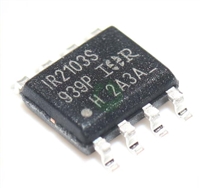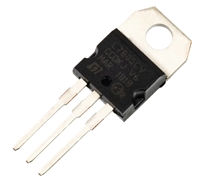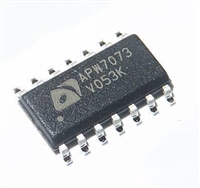AD1674
VALUE OF A AT LAST
0
CONVERT COMMAND
Q
D
Q
D
QB
EOC 12
EOC 8
EN
EN
R
S
Q
SAR RESET
S
R
Q
QB
1µs DELAY-HOLD SETTLING
CE
CLK ENABLE
STATUS
CS
R/C
1µs DELAY-ACQUISITION
HOLD/SAMPLE
A
0
NYBBLE A
NYBBLE B
READ
12/8
TO OUTPUT
BUFFERS
NYBBLE C
NYBBLE B = 0
Figure 10. Equivalent Internal Logic Circuitry
FULL-CO NTRO L MO D E
T he register control inputs, A0 and 12/8, control conversion
length and data format. If a conversion is started with A0 LOW,
a full 12-bit conversion cycle is initiated. If A0 is HIGH during a
convert start, a shorter 8-bit conversion cycle results.
Chip Enable (CE), Chip Select (CS) and Read/ Convert (R/C)
are used to control Convert or Read modes of operation. Either
CE or CS may be used to initiate a conversion. T he state of R/C
when CE and CS are both asserted determines whether a data
Read (R/C = 1) or a Convert (R/C = 0) is in progress. R/C
should be LOW before both CE and CS are asserted; if R/C is
HIGH, a Read operation will momentarily occur, possibly
resulting in system bus contention.
During data read operations, A0 determines whether the three-
state buffers containing the 8 MSBs of the conversion result (A0
= 0) or the 4 LSBs (A0 = 1) are enabled. T he 12/8 pin deter-
mines whether the output data is to be organized as two 8-bit
words (12/8 tied LOW) or a single 12-bit word (12/8 tied
HIGH). In the 8-bit mode, the byte addressed when A0 is high
contains the 4 LSBs from the conversion followed by four trail-
ing zeroes. T his organization allows the data lines to be over-
lapped for direct interface to 8-bit buses without the need for
external three-state buffers.
STAND -ALO NE MO D E
T he AD1674 can be used in a “stand-alone” mode, which is
useful in systems with dedicated input ports available and thus
not requiring full bus interface capability. Stand-alone mode
applications are generally able to issue conversion start com-
mands more precisely than full-control mode. T his improves ac
performance by reducing the amount of control-induced aper-
ture jitter.
INP UT CO NNECTIO NS AND CALIBRATIO N
T he 10 V p-p and 20 V p-p full-scale input ranges of the
AD1674 accept the majority of signal voltages without the need
for external voltage divider networks which could deteriorate the
accuracy of the ADC.
In stand-alone mode, the control interface for the AD1674 and
AD674A are identical. CE and 12/8 are wired HIGH, CS and
A0 are wired LOW, and conversion is controlled by R/C. T he
three-state buffers are enabled when R/C is HIGH and a con-
version starts when R/C goes LOW. T his gives rise to two pos-
sible control signals—a high pulse or a low pulse. Operation
with a low pulse is shown in Figure 4a. In this case, the outputs
are forced into the high impedance state in response to the fall-
ing edge of R/C and return to valid logic levels after the conver-
sion cycle is completed. T he ST S line goes HIGH 200 ns after
R/C goes LOW and returns low 1 µs after data is valid.
T he AD1674 is factory trimmed to minimize offset, linearity,
and full-scale errors. In many applications, no calibration trim-
ming will be required and the AD1674 will exhibit the accuracy
limits listed in the specification tables.
In some applications, offset and full-scale errors need to be
trimmed out completely. T he following sections describe the
correct procedure for these various situations.
UNIP O LAR RANGE INP UTS
If conversion is initiated by a high pulse as shown in Figure 4b,
the data lines are enabled during the time when R/C is HIGH.
T he falling edge of R/C starts the next conversion and the data
lines return to three-state (and remain three-state) until the next
high pulse of R/C.
Figure 11 illustrates the external connections for the AD1674 in
unipolar-input mode. T he first output-code transition (from
0000 0000 0000 to 0000 0000 0001) should nominally occur
for an input level of +1/2 LSB (1.22 mV above ground for a 10 V
range; 2.44 mV for a 20 V range). T o trim unipolar offset to this
nominal value, apply a +1/2 LSB signal between Pin 13 and
ground (10 V range) or Pin 14 and ground (20 V range) and ad-
just R1 until the first transition is located. If the offset trim is
not required, Pin 12 can be connected directly to Pin 9; the two
resistors and trimmer for Pin 12 are then not needed.
CO NVERSIO N TIMING
Once a conversion is started, the ST S line goes HIGH. Convert
start commands will be ignored until the conversion cycle is
complete. T he output data buffers will be enabled a minimum
of 0.6 µs prior to ST S going LOW. T he ST S line will return
LOW at the end of the conversion cycle.
–10–
REV. C
















 深入解读IR2103资料手册:引脚说明、电气参数及替换型号推荐
深入解读IR2103资料手册:引脚说明、电气参数及替换型号推荐

 L7805CV手册解读:引脚说明、替代型号推荐、好坏检测
L7805CV手册解读:引脚说明、替代型号推荐、好坏检测

 MMBT5551资料手册解读:电气参数、替换型号推荐
MMBT5551资料手册解读:电气参数、替换型号推荐

 APW7073资料手册解读:产品特性、引脚说明、替换型号推荐
APW7073资料手册解读:产品特性、引脚说明、替换型号推荐
